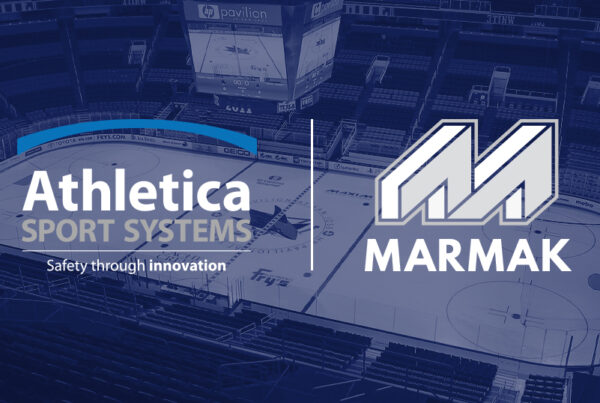Saving Money and Resources is Anything But Routine
Effective arena ice maintenance comes down to routine activities, effective installation methods, and using efficient equipment. Part 1 of this article lists various ways to reduce costs with arena ice maintenance, including:
- Painting the ice surface with a thermally conductive white paint
- Installing a snowmelt pit
- Adjusting ice temperatures for usage
- Using an electric ice resurfacer instead of a gas-powered one
- Installing fast-closing doors
- Cleaning the floor slab before ice installation
In Part 2 of the article, we consider five additional ways to lower costs with arena ice maintenance.
Appropriate Ice Thickness
Arena ice maintenance involves managing the rink’s ice thickness. Together, the ice and concrete layers insulate the cooling system from the transfer of heat, and their thickness is one of the things that determine an arena’s cooling requirement.
The ice layer should always have an optimal thickness. If the ice is too thick, the refrigeration system will have to work unnecessarily hard to maintain the surface temperature. Maintaining the temperature of an additional inch of ice requires about 10,000 kilowatt-hours per year.
If the ice layer is too thin, however, it is more susceptible to damage during hockey games. Thin ice layers also tend to melt easier than thick ones, which also increases the load on cooling systems.
The operator in charge of arena ice maintenance should consistently monitor the rink’s ice thickness to ensure that it is between 1 ¼” and 1 ½”.
Cover Ice Surface During Downtimes
A prominent arena ice maintenance challenge is that the ice always has to be within the correct temperature range, even when the ice surface is not in use.
Many arenas host events that are not necessarily related to sports. During these times, the ice layers subjected to abrasion and temperature fluctuations, which increases the ice’s maintenance requirements and the load on the refrigerator systems.
Covering the floor with thermal blankets protects the ice surface and maintains its temperature when it is not in use. High-density conversion flooring also protects the surface against foot traffic and traps the cold air to reduce energy usage.
Ice covers are expensive, but they are highly effective in reducing costs and arena ice maintenance efforts. Covering an ice layer with these blankets take no more than thirty minutes, and they reduce compressor run time significantly. Many high-value thermal blankets and conversion flooring are made of recycled materials.
Dry Shave Ice in the Mornings
Saving water is a crucial objective of arena ice maintenance. One of the most effective ways to reduce an arena’s water usage is to dry-shave the ice layer in the morning before the rink opens.
Dry shaving doesn’t only remove the ice gauges to save water, but it also keeps the ice layer at an appropriate thickness. If the ice layer gets too thick, there is more ice to maintain, and dry shaving will reduce the refrigeration system’s energy consumption.
Eco-friendly Ice Disposal
Many ice arenas leave the ice they remove from the rink outside where it can melt and drain away through storm sewers. The result is often sewer line blockages and damage to pumps. The wastewater from an ice rink typically contains the following:
- Bodily fluids like blood and saliva
- Toxic chemicals from ice paints
- Salt brine, ammonia, and oil from refrigeration systems
- Chemicals from cleaning and sanitizing products
An ice rink should incorporate eco-friendly ice disposal into their arena ice maintenance activities to reduce the environmental impact. Eco-friendly ice disposal also prevents harmful chemicals from entering the local water system, which can be a costly problem to remedy. An arena can remove wastewater safely by filtering ice paint solids before discharge.
Resurface at a Consistent Pace
Another way to optimize arena ice maintenance is to resurface the ice layer at a consistent pace and to shave ice and apply water evenly. When resurfacing, don’t put too much water next to the boards to prevent the build-up of ice.
When moving over a crease, lift the blade and turn off the water until the resurfacer is past the ridge. Fifteen minutes is enough to resurface the entire ice layer before the next user group goes on the ice. Take ten minutes to resurface the ice layer and a five-minute window to let the surface set.
Ice resurfacing at a consistent pace will allow for water savings and ensure that the ice surface has the same thickness throughout.
Missed the first part? Find Reduce Costs with Better Arena Ice Maintenance – Part 1 here.






